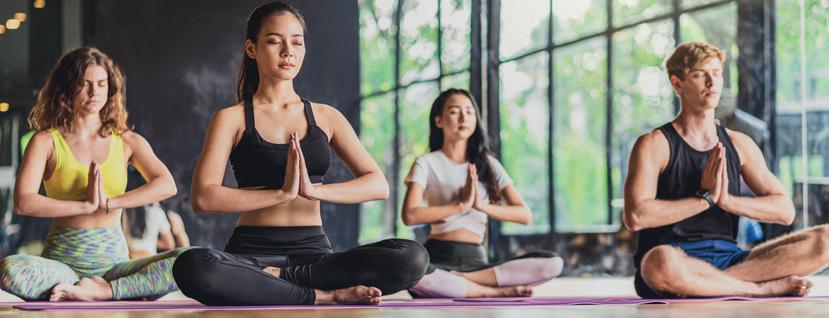
4 minute read
Contribution of physical activity to physical and mental health
SCIENCE TODAY
It is not unknown that the best medicine is the one that prevents, hence the importance of encouraging positive lifestyles to generate an adequate state of health. Strategies that improve quality of life and reduce the effects of disease and aging should also be chosen.
Advertisement
One of the chronic diseases with a multifactorial origin that most afflicts the Mexican population is obesity. Genetic factors intervene in it, but environmental and lifestyle factors such as a sedentary lifestyle, physical inactivity, as well as the intake of foods with high energy density and large portions influence a greater proportion. All of these are identified as risk factors associated with overweight and obesity.
They condition the development of metabolic syndrome, a group of disorders that includes increased blood pressure, glucose, insulin, cholesterol and/ or triglycerides, and body fat around the waist. This increases the risk of coronary heart disease, diabetes mellitus, high blood pressure, osteoarthritis, sleep apnea, respiratory problems, and some types of cancer.
Hence, the practice of physical activity and sports promotes health by providing benefits such as increased muscle tone and mass, improved blood circulation, increases the amount of oxygen that the lungs can store, helps achieve and maintain a healthy weight, improves joint mobility, and increases flexibility to avoid injuries and prevent falls; it strengthens bones and helps prevent osteoporosis.

It also contributes to mental health because it helps increase the production of neurotransmitters such as epinephrine, norepinephrine, serotonin, and dopamine, which improve mood producing a feeling of well-being and immediate relaxation, in addition to positively influencing mental health by reducing anxiety, depression and helping to better cope with the stress of daily life.
All forms of activity or physical exercise are beneficial, the goal is to enjoy its practice and carry it out for at least 30 minutes a day with activities such as walking, climbing stairs instead of using the elevator, cycling, dancing, jogging, and incorporating strengthening exercises, flexibility and those that improve balance and prevent the risk of falls.
Since physical activity has been incorporated into daily life, it is important not to abandon the habit. We must remember that performing physical exercise and increasing physical activity in our lives is essential to improve health and reduce diseases, also promotes environmental protection, and becomes a long-term health investment.
In order to improve the quality of life, I propose the following physical activity plan:
1. TRY TO WALK FOR AT LEAST 30 MINUTES A DAY
Walking is easy to do and safe for your body because it is unlikely to cause injury compared to jogging or running. It is an aerobic exercise that does good to your heart and circulatory system. Walking in company can increase adherence to the habit and be a more enjoyable activity.
2. PERFORM STRETCHES AND PUSH-UPS
Stretching can be done at any time, while at work, in the car, or at school. It is important to stretch before and after doing some physical activity, but also when we get up, when being several hours in front of the computer or TV or when you feel tension in the arms, neck, or back.

3. DO STRENGTH EXERCISES
Carrying the bags from the supermarket and climbing stairs with them is a good method to develop muscle strength, also do sit-ups always take care of the posture, doing push-ups and extensions of the arms tilting the trunk, and resting the hands against the wall, in three batches or series of at least eight repetitions, with a minute of rest between each one.
Physical activity does not have an age limitation, this small program can be the motivator to start a more active and healthy life.
Lorena Guido

Project Development Coordinator at FUNSALUD. More than 12 years of experience in the development and implementation of health and wellness programs for international private companies and the public sector; CEO at +Salud
Source:
1. Rodríguez-Romo, G., Barriopedro, M., Alonso Salazar, P. J., & Garrido-Muñoz M. (2015). Relaciones entre Actividad Física y Salud Mental en la Población Adulta de Madrid. Revista de Psicología del Deporte, 24(2),233-239.[fecha de Consulta 4 de Noviembre de 2022]. ISSN: 1132-239X. Recuperado de: https://www.redalyc.org/articulo. oa?id=235141413005
2. Fouilloux, C; Fouilloux-Morales, M; Tafoya, SA; Petra-Micu, I. (2021). Asociación entre actividad física y salud mental positiva en estudiantes de medicina en México: un estudio transversal. Cuadernos de Psicología del Deporte, 21(3), 1-15. [fecha de consulta 4 de noviembre de 2022]. ISSN edición impresa: 1578-8423 Recuperado de: https://www. redalyc.org/pdf/542/54250121006










